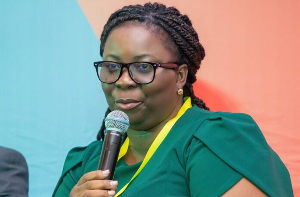Yam traders in Accra have been trained to effectively cure wounded yams, delay sprouting of stored yams in addition to the storage of yam in improved yam barn.
The training program, organized by the CSIR-Food Research Institute in conjunction with Social Development and Improvement Agency (SODIA) is to address challenges in the production, handling and processing of root and tuber crops and also find solution to the huge waste which is generated by the processing of root and tuber crops.
Sixty one traders drawn from Agbogbloshie, a suburb in Accra received the training developed under the GRATITUDE Project by the CSIR-Food Research Institute (FRI) which is a dissemination drive of technologies developed under the Gratitude project conducted by the CSIR-FRI.
The technologies were developed under the Work Package 2 of the GRATITUDE Project.
The GRATITUDE Project is a three years project which is being sponsored by the CSIR-FRI, University of Ghana (UG) and Natural Research Institute (NRI) and targeted at making Gains from the Losses of Root and Tuber crops, with emphasis on cassava and yam.
The program is being implemented by United Kingdom, Nigeria, Ghana, Thailand and Vietnam.
Dr Charles Tortoe, Head of Food Processing and Engineering Unit of the FRI took yam wholesalers, retailers and transporters through the technologies of effectively curing wounded yams, delaying sprouting of stored yams and storage of yams in improved yam barn.
“The project aims at reducing yam and cassava losses to enhance the role that these crops play in food and income security. Post-harvest physical losses of these crops are exceptionally high approximately 30% in cassava and 60% in yam and occur throughout the food chain” Dr Tortoe said.
The wastes of cassava and yam come in various forms as peeling losses can be 15-20% or higher he said and added that waste often had no economic value which could make processing a marginal business proposition.
“The overall objective of this project is therefore to improve the post-harvest management of cassava and yams leading to reduce physical losses, reduced economic losses through value added processing and valorization of waste products” he said.
The general objectives are in three folds to Reduce physical post-harvest losses of fresh produce focusing mainly on yams, Reduce economic losses through value added processing focusing on both cassava and yam and make use of waste from the value chain focusing mainly on cassava.
Mr. Solomon Dowuona, a Technologist at the CSIR- FRI, demonstrated the curing and sprout control strategies to the participants by artificially created wounds on a wholesome tuber and showed the participants how to cure the wounds using jute sack.
With a 600ppm potash (burnt cocoa pod) solution he taught the participants the techniques involved in sprout control.
He immersed the apical portion of the yam tuber into the 600ppm potash solution and kept it in for 60 seconds, after which he removed it from the plant extract solution, dry and was then ready to be stored in an improved yam storage barn.
Mr Azizzu Issifu, who represented SODIA, challenged the participants to take keen interest in the training and also put into practice the techniques to enhance their livelihood as yam retailers.
The retailers, wholesalers and transporters were grateful for the training and agreed to practice the learned technologies for yam improvement in Ghana.
Ghana export approximately 27,000mt of yams to countries like the UK, the Netherland and the USA
Regional News of Wednesday, 1 October 2014
Source: GNA
Yam traders schooled on storage practices













